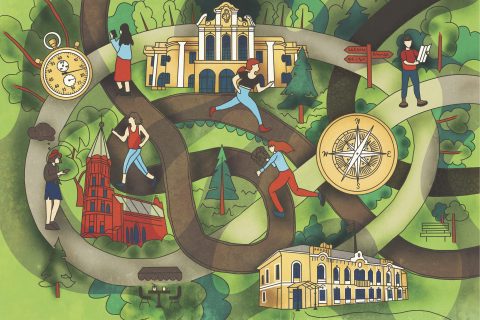SneakyBox – the name already known to many enthusiasts in this field – was born in Kaunas 9 years ago out of a desire to create interesting and innovative games in Lithuania. Here is the conversation about it with the team members of the digital creative studio.
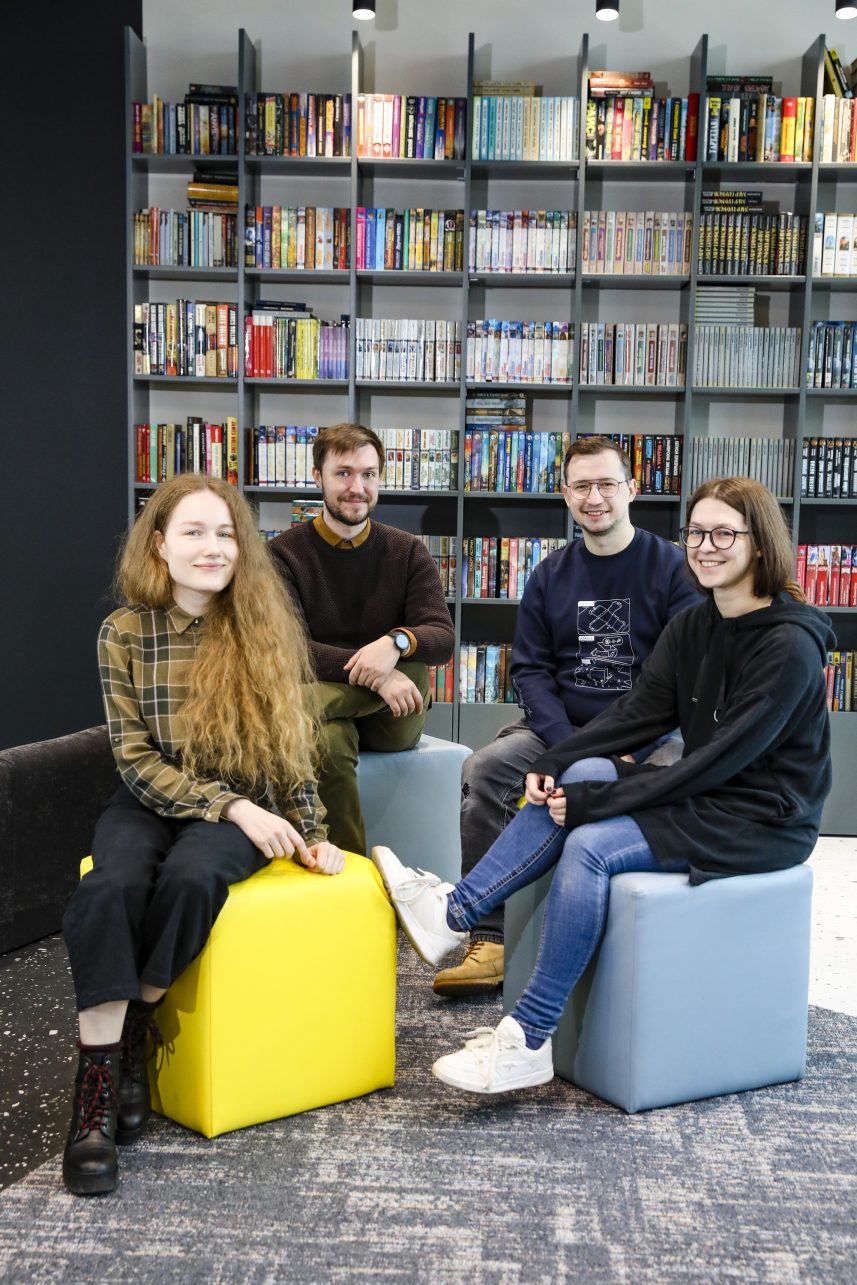
Photographer Teodoras and I stopped by the SneakyBox office in Vienybės Square, where the company had just moved in. The slowly growing team has more than 50 members today, five of whom shared their thoughts on the most exciting work experiences and the gaming industry. We sat down in the leisure area with the project manager, producer Tadas Migauskas, art director Vaidas Mikelskas, lead artist Ieva Auželytė, and designer Kristina Kuosaitė; illustrator Margarita Musytė joined the conversation virtually.
“In the fifth grade, I was given the task of writing a letter to myself in the future. I read it after graduating from school and discovered that I already wanted to work in the game industry, so I have been pursuing this career purposefully since then,” Tadas said. Vaidas also wanted to create games since he was a kid, discovering his love for it when his father got him his first computer. Ieva and Kristina also recall thinking about this career but then had forgotten the idea for a while and only after they ended up in the field by accident, did they realize that they were fulfilling one of their old dreams. And Margarita fell in love with games and realized she wanted to contribute to their development while she was still a student, during participation in the first Game Jam event, where small teams had to create a game over the weekend. Although the team members were brought to the SneakyBox studio by different paths, they agree that everyone admired the ideas and works of this company and its founders. “Even before I got a job here, I knew that SneakyBox was working on a lot of interesting projects, but only after joining it, I have realized how many and how diverse they were. The company has probably created about 500 products,” Vaidas explained.
How are games designed?
Like most other creative projects, game development starts with an idea. The interviewees note that this is usually a rather abstract thought, which takes on an increasingly concrete form during work. During the creation of a game, it evolves several times. The team discovers what makes sense and what doesn’t work. They agree that there are no completely original ideas because everything has already been described in literary works or shown in films, but the base of all these thoughts and experiences, which are stored in our minds, allows us to combine different pieces of information, thus creating something new.
The immersive nature of the games can be educationally beneficial.
Game development can take anywhere from a month to ten or even more years, but the industry standard is about 1 to 4 years. The time and resources depend on the chosen video resolution, the number of components needed for the project, such as 3D models, the primary and secondary game mechanics. “Then there are other parts: whether the game needs online functionality, what platform it will be adapted to, whether we will need animated characters, how many and what kind of sound effects we want, whether we will use texts, dubbing and so on. Based on these elements, we decide how long the implementation of the project might take,” Tadas explained. Vaidas agreed, “Different platforms determine the specific elements of the game user interface: whether it is possible to touch the screen with your finger, wave your hands, enter commands with the keyboard keys, press the buttons on the remote control and what the size of the image on the screen will be. There are many issues to consider when creating games for different devices and projects. Making games never takes less time than planned because in a sense it is a work of art. So, the creative process ends when time runs out or when you get angry with a project and can no longer look at it. Then you put a full stop and release it into the world.”
Such an approach based on practicality and functionality is also necessary for the creation of the visual elements of the games. “You may have a great idea for the visuals but if you will not be able to adapt it to the program code or project development time, it won’t make sense,” Margarita explained. “Games are interdisciplinary, so compared to the press illustration, there’s a bit more planning and compromise involved here, trying to take into account interactivity, animation, various technical limitations, and other elements,” Kristina added. However, the artists say that the limits of the projects do not constrain them but rather enable creative potential, develop various competencies and help to discover new solutions. Their work begins with trying to capture the mood of the game, discovering the right colors and shapes for it. Stylescapes help to refine the idea, which allows you to feel the overall aesthetics and atmosphere of the design. In their work, the artists also use the vertical slice method, which is popular with game developers. In this case, it means that the artist draws one of the characters in the game, the environment, the font, and selects the dominant colors. This helps to form an overall picture and check how the visual details interact. It also acts as a kind of style guide for illustrators who later join the process of image creation. However, the team emphasized that the creative process of each project is completely different. “There is no one recipe for creating a game,” Ieva said.
From adaptations of retro games to digitized educational trails
The catalog of SneakyBox studio works is characterized by a wide range of ideas, styles, and the type of overall operation. Ieva, Kristina, and Tadas enthusiastically remember working with the legendary game company Atari. They have recently become the creators of two of this company’s projects. They created Days of Doom and Centipede: Recharged, which were inspired by the retro arcade game originals. Ieva is glad that Atari gave her a lot of creative freedom; they trusted the vision and skills of the SneakyBox studio. “I was impressed that we worked with Atari as a team, they often shared their insights, but these were not specific requirements. The project was considered the work of our team,” Kristina said. The Atari itself has helped maintain the spirit of the old games, and the strong existing foundation has become a great source of inspiration. “We knew it worked and that we could develop these ideas further. Working with large franchises sets certain boundaries, but it’s fun to discover what exciting things can be implemented within these limits,” Tadas said.
The SneakyBox app Birds Routes reflects a completely different creative direction. It used the spots in the Pamarys region that are frequently visited by bird watchers. “Once you have recorded your location in the app, you can play mini-games and collect virtual birds at these points. After finishing the project, I drove to the game locations myself – it was a great experience,” Tadas happily recalled. However, this is not the only work (created by the studio) that digitalizes and gamifies tourist destinations. SneakyBox has also been trusted to apply It’s Kaunastic themed maps to mobile phones. It was interesting to work on this project because I love Kaunas and I have previously enjoyed the physical, paper versions of these routes. The challenge was to fit everything into one map which would be interactive, adaptable to the legends behind buildings, spaces, artworks, and monuments. The digital form is ecological, and the interactivity helps to use it conveniently, it provides the information that is important at a specific point,” Vaidas told us about the implementation of the project.
The Game as an educational tool
The educational type games created by the SneakyBox team with various partners in Kaunas and throughout Lithuania are worth mentioning. They are usually born out of the initiators’ desire to tell real stories in a playful way, to reveal work processes, or to analyze current problems. A close dialogue between game developers and partners is very important when working with this type of project. This is how the game/interaction Diplomats of Hope created with the Kaunas IX Fort Museum was born. It allows the visitor to sit in the diplomat’s chair and make decisions that will determine people’s destinies. Diplomats of Hope tells the stories of the interwar period Jews and the people who sought to help them. “This project was very memorable. At the time, I had just reviewed many testimonies of Holocaust survivors, so while drawing the visuals of the game, I carried these emotions with me. The creation of illustrations for Diplomats of Hope started with the study of the visual material. In my mind I tried to combine planned illustrations and specific historical images, thus discovering the right mood, atmosphere, colors. The design of the visuals for Diplomats of Hope was also inspired by Margarita’s illustrations for the game [Un]defeated. I liked her light and elegant drawing,” Kristina says.
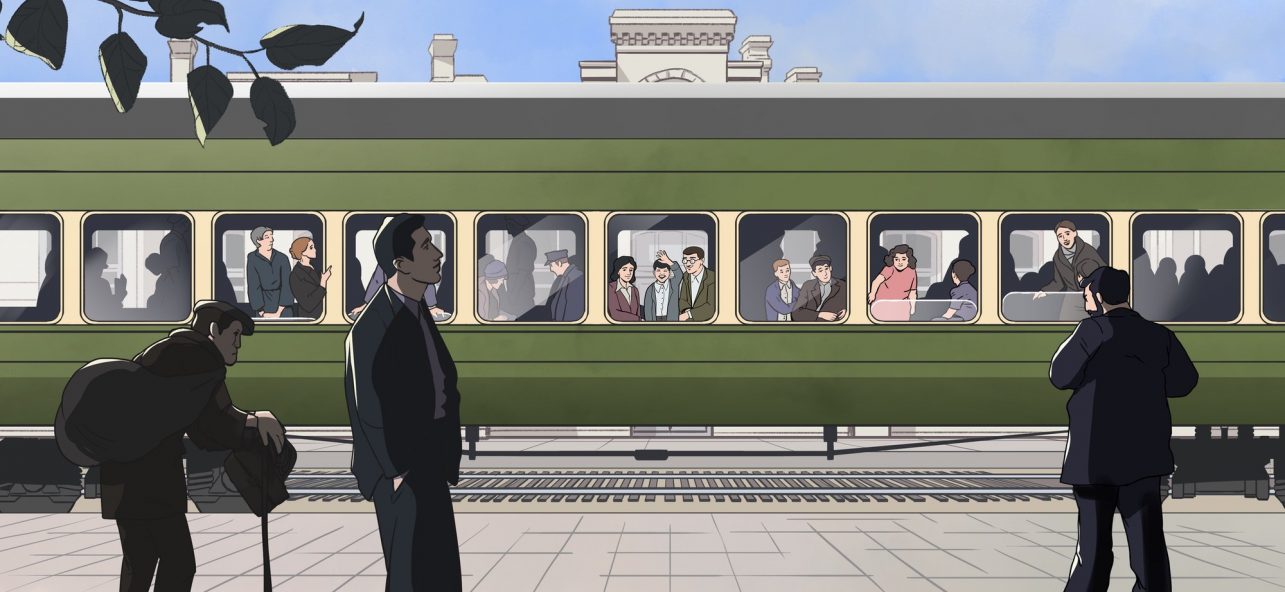
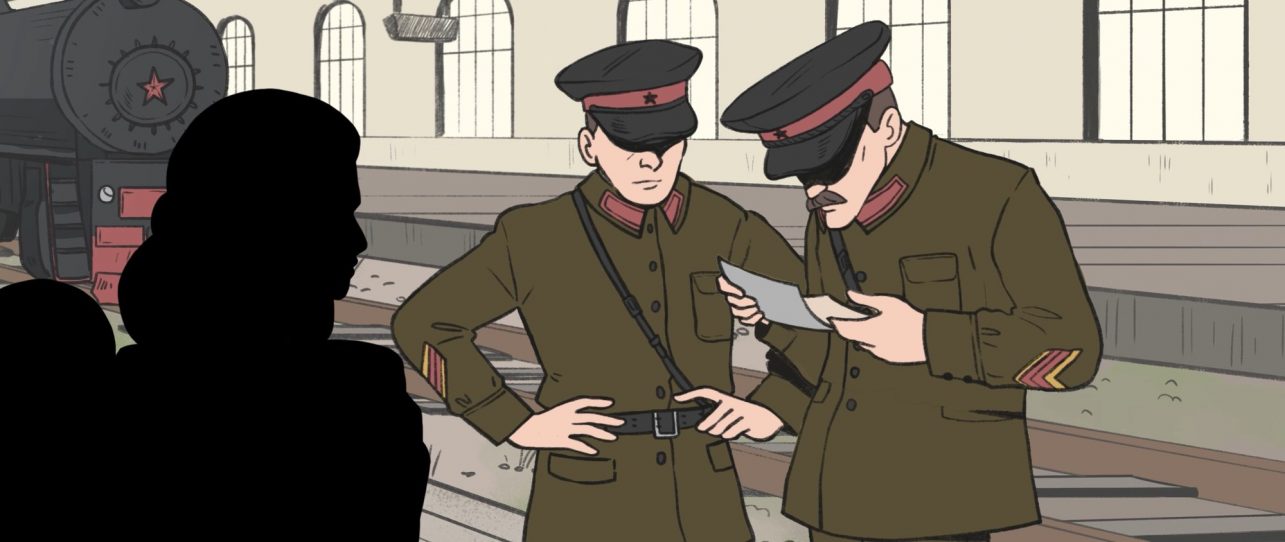
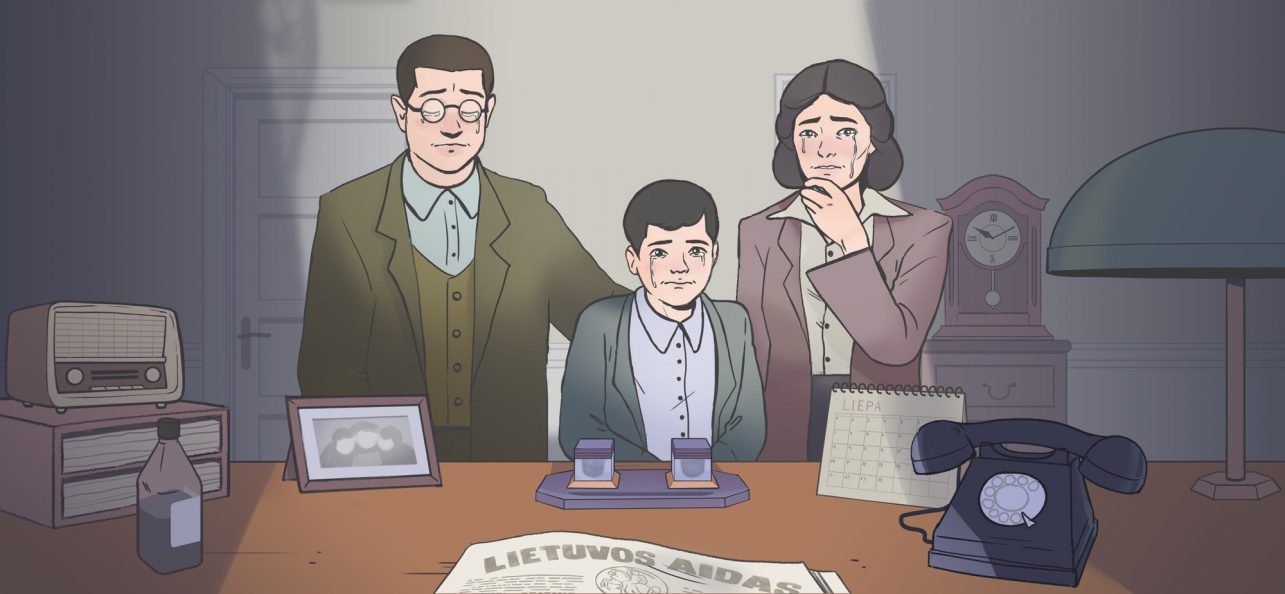
Diplomats of Hope. Illustrations by Kristina Kuosaitė.
The game [Un]defeated mentioned by Kristina was commissioned by the Centre for Communicable Diseases and AIDS. The animated game with a help of a sensitive story allows the players to learn about the difficulties that a person with tuberculosis may face. Margarita said that the creation of the game started with a story, the principles of its gamification, and the choosing of the mood. The illustrator then drew the characters as they were at the center of the story of this game. Because this story is serious, they chose the drawing that was not too stylized, which helped convey the synergy between the narrative and the visual details. “Another project – The Journey to the 9th Station – created with Gabrielė Petkevičaitė-Bitė Public Library of Panevėžys County also stuck with me. A children’s drawing competition was organized during the project, and we turned four winning ones into the characters of the game. It was very unusual and interesting to use children’s work as a starting point for illustrations,” Margarita remembered.

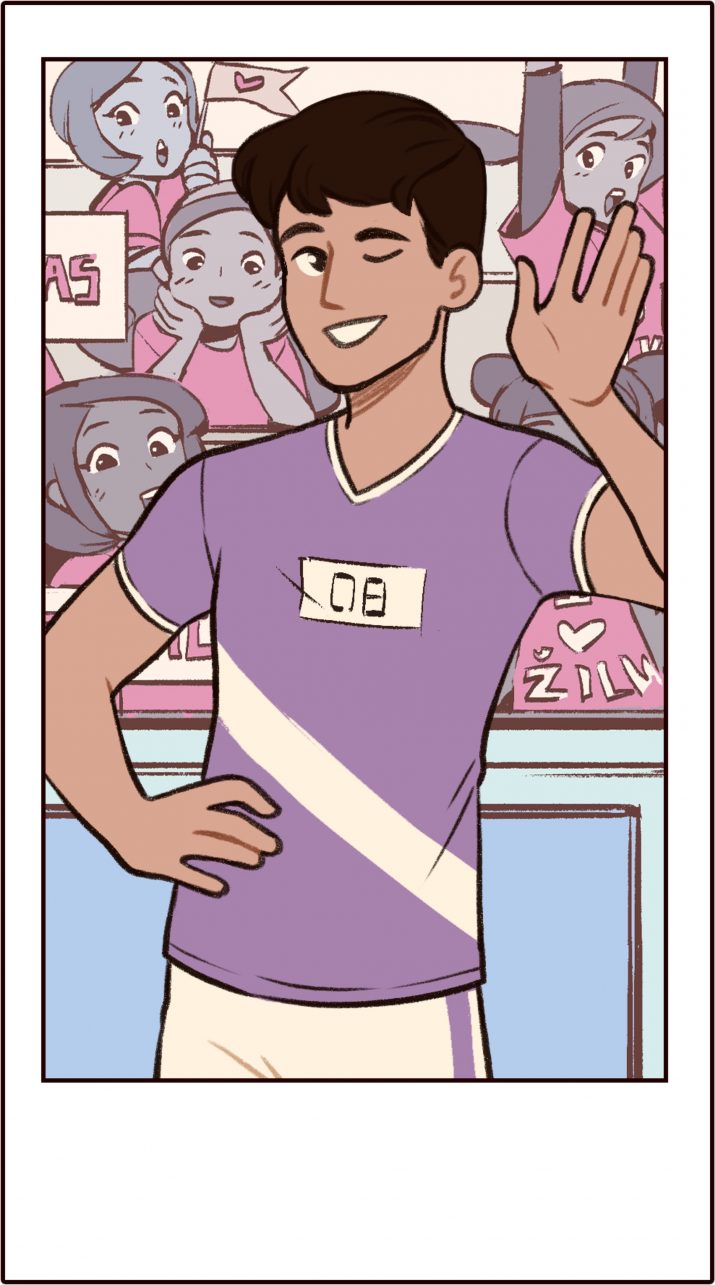
Redakcija 2030 takes the player to the near future, where a dystopian scenario comes true – there is only one news channel in Lithuania. The player has the opportunity to get acquainted with the routine of the editor’s work, which includes separating real news from the fake ones, checking the reliability of information sources, monitoring and moderating the comments section. The main goal of Redakcija 2030 is to develop players’ critical thinking and ability to behave efficiently and safely in the Internet space through playful methods that are attractive to various age groups. The game for smartphones was presented together with the association Window to the Future in the context of the project Lithuania Online. “Sometimes the institutions that initiate a project pass on a lot of specific material that we have to use as a basis for a story but in this case, everything started from an abstract goal to introduce a game about the safe internet. So perhaps the third of the project’s time was spent planning and generating ideas about the form of the game. I am glad that the game came out quite difficult. It is fun to try and complete it several times, to delve into different elements,” Vaidas shared his thoughts.
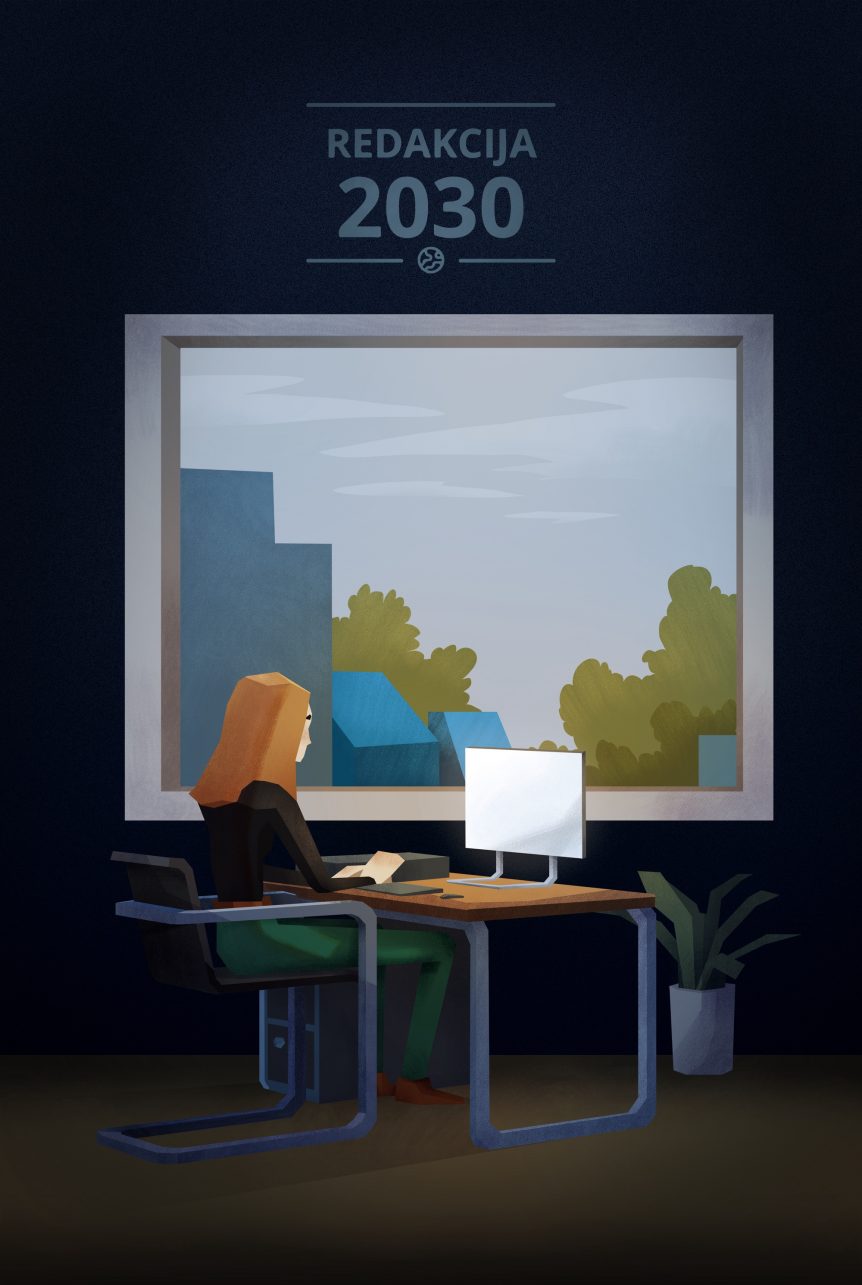
Briefly about game criticism
The growing gaming industry is receiving a great deal of criticism in the media and public discourse today. It is talked about both addiction and incitement to hatred or violence. This often sounds absurd, but is there any truth to this speculation? SneakyBox team looks at this issue broadly. Interviewees shared insights that various forms of media, such as movies, newspapers, magazines, music, and even books, were criticized at the beginning of their history, and the field of games is still entirely new, so it’s natural for people to question their influence.
“Questions about addiction often arise because interactivity draws you in and some game developers use that. The most popular franchises really use these psychological tools to get us to pay them with our attention or money. However, this is not the goal of all developers. Slowly the games are trying to shake off this negative image as older media was doing earlier. A lot of scientific research has been done, denying that games promote violence, cause damage to the eyes or the brain. Games satisfy our certain psychological needs, provide a sense of autonomy and community,” Vaidas explained. Interviewees encourage us to remain critical and notice both the positive and negative aspects of games. “The immersive nature of the games can be educationally beneficial. I also share this type of player’s mindset, so gamification helps me memorize the information, learn to orientate quickly and also allows me to relax,” Kristina said.
What makes a game good?
After having the conversation with the SneakyBox team about their favorite games, I noticed that they are mostly fascinated with interesting characters and a compelling mood. So, in this context they mentioned Dragon Age: Origins, Mass Effect, Red Dead Redemption, Baldur’s Gate games and their series. Kristina noted that the game draws you in when its mechanics complement the story. “Without this synergy, it may be more meaningful to read the story in a literary work. For example, creators of the Life is Strange game, applied it perfectly. In most games, if you fail to complete the task, you have to start all over, but Life is Strange have turned this reversal of time into a superpower of the main character and an integral part of the story.” But next to the fantastic and larger than life stories full of games, the team also enjoys different kinds of games, like Stardew Valley and Animal Crossing that have a relaxing effect, as well as such narratives like Firewatch that gamify the small scenarios, and games like Portal 2 that combine logical thinking and elements of history. And sometimes great mechanics are enough, because such games also bring you joy. “The story is very important, but I like to play Apex Legends every night because it’s just fun,” Ieva said. Tadas expanded on that, “It is worth playing 2016 Doom just because of the soundtrack that adapts to the player’s actions. Of course, the mechanics are great too, although the story is not that elaborate. And Cyberpunk 2077 had many gaps in terms of its implementation, but the story was interesting.” So, the SneakyBox team sees the charm of the games in different elements, agreeing that their favorites might not be sharing similar story lines or mechanics, but they always share the quality. Inspired by them, they try to apply such principles in their current and future projects.


